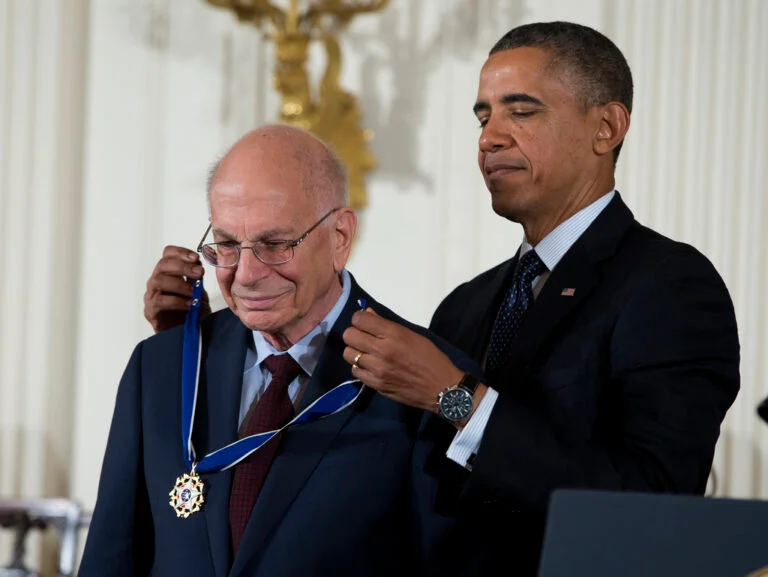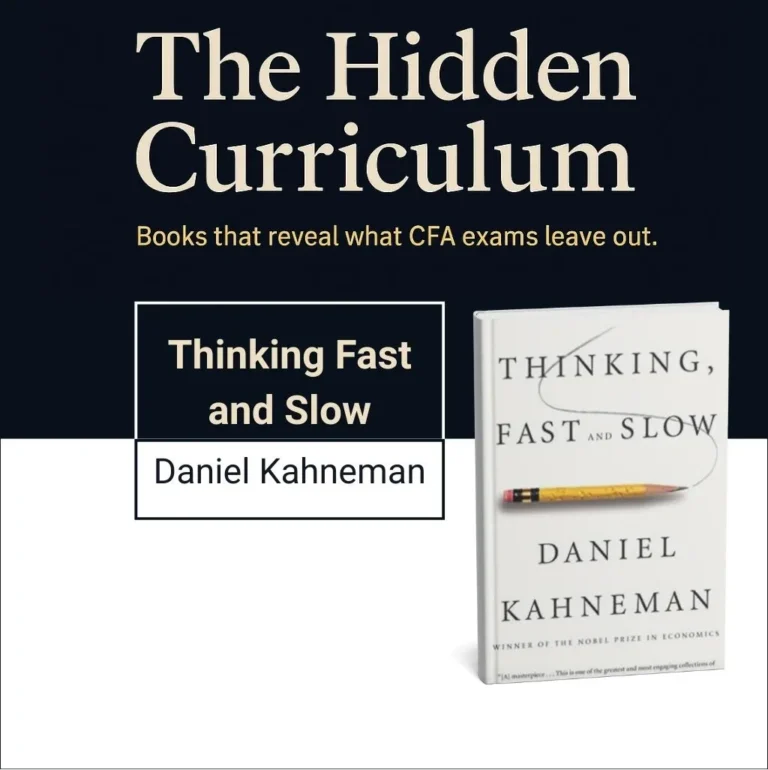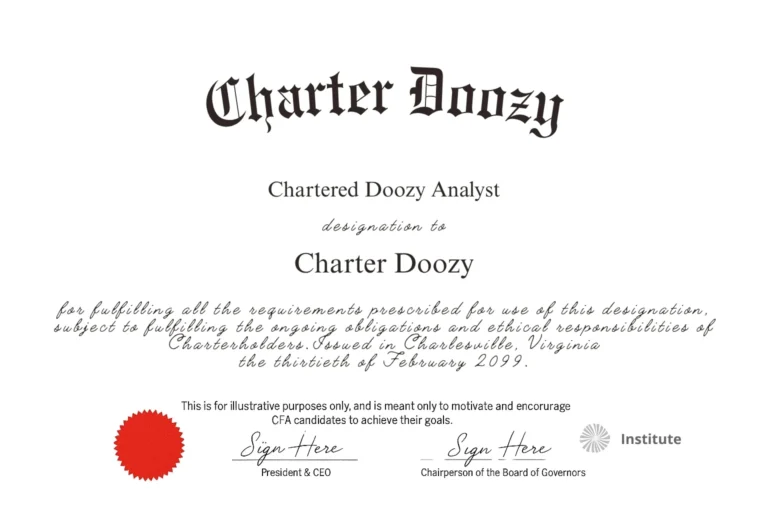Thinking, Fast and Slow by Daniel Kahneman
Hidden Lesson: Your greatest risk isn’t market volatility—it’s your own unexamined mind. Learn to distrust your instincts, especially when they feel most certain.
What the CFA Curriculum Teaches You:
The CFA Program trains you in rational analysis: risk-adjusted return, arbitrage-free pricing, utility theory. The assumption is that you are a rational actor, processing inputs through a disciplined framework to arrive at optimal decisions. The curriculum is rigorous, analytical, and rooted in classical economics.
But it doesn’t teach you that your brain is a biased, shortcut-hungry machine that often sabotages your best intentions—especially under stress.

What Thinking, Fast and Slow Reveals Instead:
Kahneman’s insight is deceptively simple: we have two modes of thinking. “System 1” is fast, intuitive, and automatic. “System 2” is slow, effortful, and logical. Most of the time, System 1 is running the show—even when we think we’re being analytical.
That’s a problem. System 1 relies on mental shortcuts (heuristics) that are prone to serious, predictable errors. Anchoring. Loss aversion. Hindsight bias. The halo effect. These are not quirks—they are baked into our psychology. They distort how we process information, value assets, judge risk, and recall outcomes.
In short: you are not the rational being you think you are. And unless you train yourself to spot the traps of System 1, your CFA knowledge will only take you so far.
Real-World Trigger:
You’re a CFA Level III candidate working at a boutique asset manager. The team is debating whether to increase exposure to a high-flying growth stock. A recent earnings beat has everyone excited. Your gut says yes. The charts look good. Analysts are raising price targets.
But pause. Kahneman would ask: is this your intuition—or your bias talking? Are you anchoring to recent returns? Are you underestimating risk due to narrative coherence? Are you selectively remembering times when similar bets worked?
Without self-awareness, your “investment thesis” might just be a story you’re telling yourself to justify a dopamine hit.
Why This Book Still Matters:
Because markets change, but minds don’t. Behavioral finance isn’t a trend—it’s a mirror. Kahneman helps you see how your own overconfidence, poor calibration, and storytelling brain can derail even the most well-reasoned investment decision.
Understanding these biases isn’t optional for CFA candidates—it’s survival gear. If you want to go from passing exams to thriving in the investment world, you need to build a mental immune system against cognitive error.
Reflection for CFA Candidates:
Are you mistaking speed for accuracy in your exam prep—or in your investment decisions?
When you feel confident, is it because your logic is strong—or because your System 1 has stopped asking questions?
Are you preparing your mind to analyze data—or also to question the way you analyze?
Final Thought:
You’re studying finance. But you’re also running on flawed hardware: your brain. Thinking, Fast and Slow won’t teach you how to value a company—but it might just teach you how to value your own judgment. And in this industry, that’s everything.

